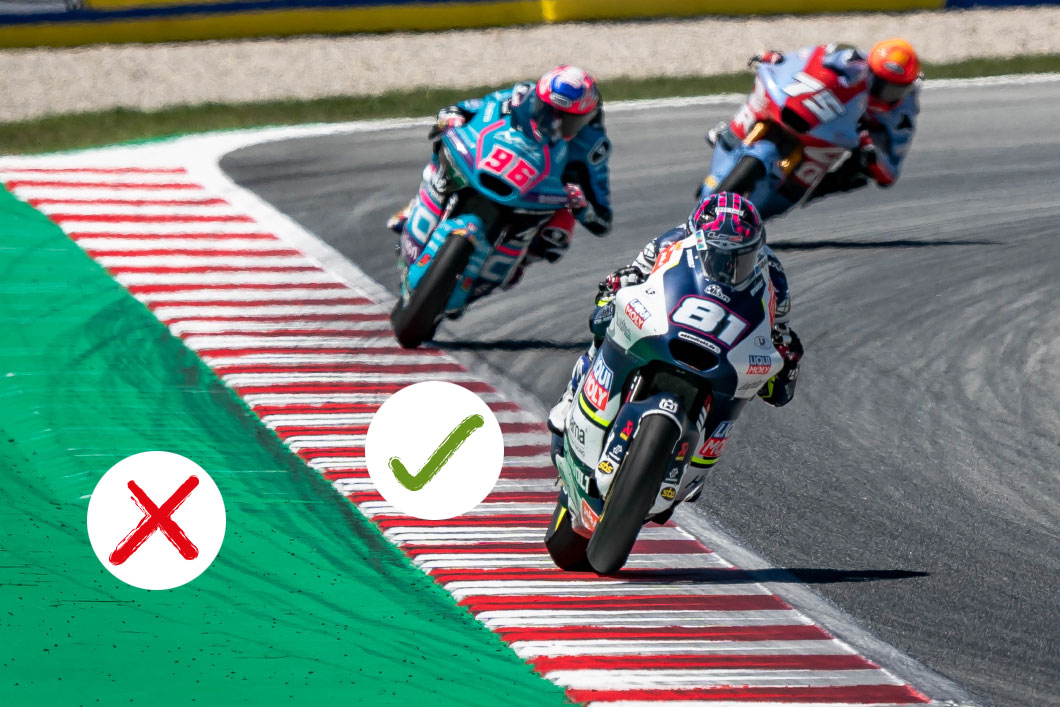Track limits, shortcuts and long lap penalties in Moto2


While driving in the area marked red and white is okay, driving above the area marked green is punishable as an offense.
Want to find out more about the intricacies of track limits, shortcuts and the long lap penalty in Moto2? Then let's dive deeper into the matter! These rules are crucial for fair racing and rider safety, and they make for exciting battles on the track.
Imagine the racetrack as a road with invisible lines marking the limits. These lines are the track limits. If a driver crosses this line with even one tire, it can be considered as exceeding the track limits. Why is this so important? Well, if a driver leaves the track, they may be able to gain an advantage by cutting a corner short or carrying more momentum into the next section of the track.
Race control monitors the track limits with the help of high-tech cameras that are strategically positioned along the track. Special software analyzes the images and automatically reports if a driver exceeds the limits. But it is not always easy to judge whether a driver has actually gained an advantage. That's why there is a staggered system that differs depending on the situation:
Racing action in Moto2 - certain rules must always be observed in order to celebrate success
Shortcuts are even more obvious: a driver deliberately shortens a chicane or a section of the track in order to gain time. This is strictly forbidden and is immediately punished with a penalty. Race control uses timing loops to precisely measure how much time a driver has gained by taking a shortcut.
Penalties for shortcuts are easier to measure than for track limits. While with track limits it is not always clear whether a time advantage is gained, this is clearly measurable with shortcuts. If a driver takes a shortcut in the race, he must lose at least one second compared to his normal time in this section. If he does not close the throttle immediately after the infringement and does not lose more than one second as a result, a long lap penalty is imposed immediately, even if it is his first infringement.

The long lap penalty is an additional loop that lies outside the racing line and costs the driver around two to three seconds. It serves as a penalty for exceeding the track limits or taking a shortcut. As soon as you are shown the penalty, you have three laps to serve it. If you fail to do so, you could face an even harsher penalty: a drive-through penalty through the pit lane.
The rules relating to track limits, shortcuts and the long lap penalty serve to ensure fair and safe races. They prevent drivers from gaining unfair advantages and ensure that the race result is decided on the track, not by subsequent time penalties. This makes the races more exciting and more transparent for us fans.
The world of Moto2 is full of exciting details, and the rules surrounding track limits and penalties are an important part of this. They show how important precision and fairness are in motorsport. So, at the next race, keep a close eye on the riders and their lines - you might just spot who is serving a long lap penalty or who is losing a lap time in practice for exceeding the track limits!